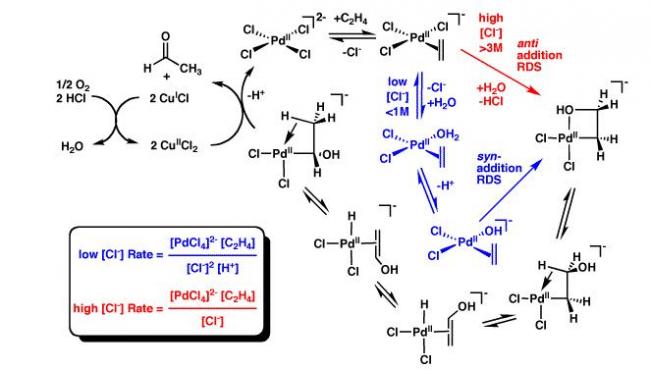Concepts: Hybridisation of carbon; Sigma and pi-bonds; Shapes of simple organic molecules; Structural and geometrical isomerism; Optical isomerism of compounds containing up to two asymmetric centres, (R,S and E,Z nomenclature excluded); IUPAC nomenclature of simple organic compounds (only hydrocarbons, mono-functional and bi-functional compounds); Conformations of ethane and butane (Newman projections); Resonance and hyperconjugation; Keto-enol tautomerism; Determination of empirical and molecular formulae of simple compounds (only combustion method); Hydrogen bonds: definition and their effects on physical properties of alcohols and carboxylic acids; Inductive and resonance effects on acidity and basicity of organic acids and bases; Polarity and inductive effects in alkyl halides; Reactive intermediates produced during homolytic and heterolytic bond cleavage; Formation, structure and stability of carbocations, carbanions and free radicals.
Preparation, properties and reactions of alkanes: Homologous series, physical properties of alkanes (melting points, boiling points and density); Combustion and halogenation of alkanes; Preparation of alkanes by Wurtz reaction and decarboxylation reactions.
Preparation, properties and reactions of alkenes and alkynes: Physical properties of alkenes and alkynes (boiling points, density and dipole moments); Acidity of alkynes; Acid catalysed hydration of alkenes and alkynes (excluding the stereochemistry of addition and elimination); Reactions of alkenes with KMnO4 and ozone; Reduction of alkenes and alkynes; Preparation of alkenes and alkynes by elimination reactions; Electrophilic addition reactions of alkenes with X2, HX, HOX and H2O (X=halogen); Addition reactions of alkynes; Metal acetylides.
Reactions of benzene: Structure and aromaticity; Electrophilic substitution reactions: halogenation, nitration, sulphonation, Friedel-Crafts alkylation and acylation; Effect of o-, m- and p-directing groups in monosubstituted benzenes.
Phenols: Acidity, electrophilic substitution reactions (halogenation, nitration and sulphonation); Reimer-Tieman reaction, Kolbe reaction.
Characteristic reactions of the following (including those mentioned above): Alkyl halides: rearrangement reactions of alkyl carbocation, Grignard reactions, nucleophilic substitution reactions; Alcohols: esterification, dehydration and oxidation, reaction with sodium, phosphorus halides, ZnCl2/concentrated HCl, conversion of alcohols into aldehydes and ketones; Ethers:Preparation by Williamson’s Synthesis; Aldehydes and Ketones: oxidation, reduction, oxime and hydrazone formation; aldol condensation, Perkin reaction; Cannizzaro reaction; haloform reaction and nucleophilic addition reactions (Grignard addition); Carboxylic acids: formation of esters, acid chlorides and amides, ester hydrolysis; Amines: basicity of substituted anilines and aliphatic amines, preparation from nitro compounds, reaction with nitrous acid, azo coupling reaction of diazonium salts of aromatic amines, Sandmeyer and related reactions of diazonium salts; carbylamine reaction; Haloarenes: nucleophilic aromatic substitution in haloarenes and substituted haloarenes (excluding Benzyne mechanism and Cine substitution).
I meant any name outside these!





